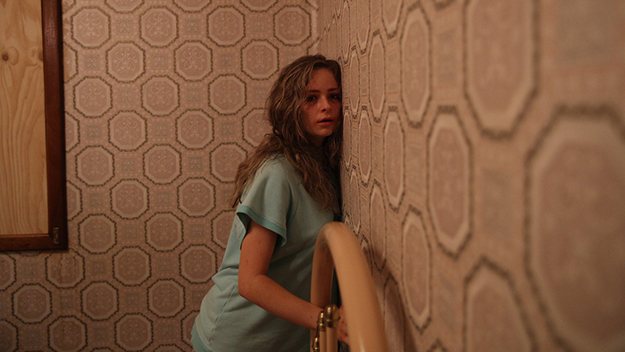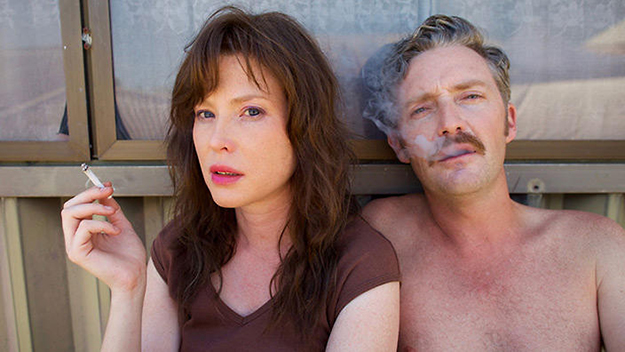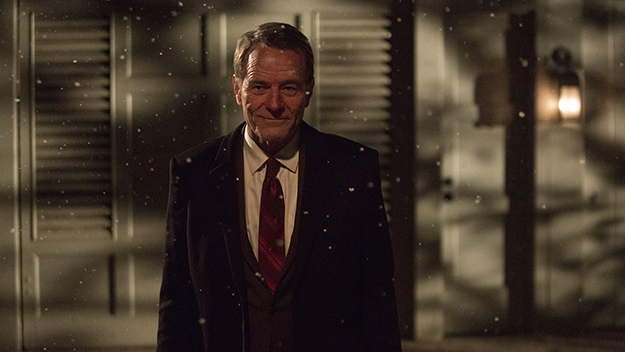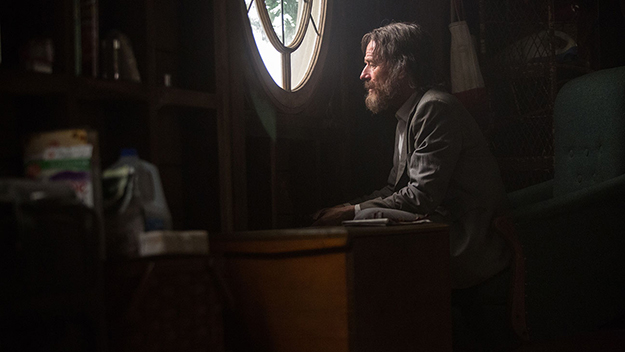Deep Focus: Wakefield and Hounds of Love

Hounds of Love
In Ben Young’s bristling true-crime horror film Hounds of Love, an unassuming couple in 1987 suburban Perth, Western Australia, put on a hip, friendly manner to lure high-school girls into their modest ranch-style home, where they drug, rape, and kill them. (The couple is based primarily on serial killers David and Catherine Birnie.) In Robin Swicord’s pungent contemporary fable Wakefield, a successful corporate lawyer in suburban New York comes home late from work because of a power outage, then delays entering his house indefinitely. (Swicord’s deft and daring script derives from E.L. Doctorow’s 2008 short story.) He chooses to live secretly in the neglected attic of his carriage-house garage, where he observes his wife and twin daughters from a distance, often through binoculars.
Hounds of Love—a genuinely nightmarish, nerve-wrackingly observant movie—focuses on the couple’s latest kidnap victim, 17-year-old Vicki Maloney (Ashleigh Cummings), who susses out the rifts in the lethal co-dependency of John and Evelyn White (Stephen Curry and Emma Booth). Wakefield is both a roller-coaster psychic study of a man in search of his own character and a wicked riff on a wilderness adventure, as Wakefield (Bryan Cranston) forages his town’s well-stocked garbage cans for garb and grub and even logs time in the local nature preserve. (It’s fitting and amusing to consider that some members of Swicord’s crew also worked on The Revenant.)
Although far different in tone, mood, and genre, these two instantly memorable films share peculiar qualities of suburban obsession, on the part of the characters and the filmmakers.

Hounds of Love
Writer-director Young, in his filmmaker’s statement for his debut feature Hounds of Love, says he set out to create from the beginning “a perverse unease in what we would usually associate as a safe, suburban environment.” In Wakefield, the antihero/narrator sees the “disconnects” of his botched trip back to his commuter town as part of “the trajectory of a collapsing civilization.” In these movies, calamity and distress do not come from the usual clichés of wicked developers building malls on top of graveyards or yuppies renovating haunted homes. Their horrors emerge from characters struggling to construct artificial lifestyles on resistant natural turf.
Hounds of Love is creepy from the get-go. Young starts his film with voyeuristic close-ups of healthy young female bodies straining against school uniforms on a volleyball court. He also conveys an oppressive aura of heat beating down from the sun and radiating up from the ground. Were humans meant to live in this environment? The skyrocketing temperature persuades the first victim we see to accept a ride home in the Whites’ car. As they make quick work of her, Johnson introduces us to their next target, Vicki, as she rewards her boyfriend with a make-out session for doing some homework for her. We soon learn that her parents have separated, and her mother, seeking to establish a life apart from her well-heeled surgeon husband, has moved to what Young calls “outer suburbia”—a great phrase for “the other side of the tracks” in a town where the one sign of escape is the sight of jets flying up and away. Outer suburbia is where Vicki falls prey to Evelyn and John White when she sneaks out a window after her mother has grounded her.
The Whites’ amiable older-neighbor act, and the prospect of buying a reefer for a “tenner” is enough to get Vicki into their car; their practiced affability as a couple and Evelyn’s sisterly solicitude ease Vicki into the house, where wine and knockout pills do the rest. What’s scary in this movie is how the Whites make atrocity routine. Vicki finds herself chained to the guest bed as part of a brutal ritual that we know they play out repeatedly. Evelyn’s matter-of-factness as she handles a box of sex toys/rape aids or mops blood off the floor is as petrifying as John’s satisfied expression when he packs a corpse into his car trunk, then buries it in a pine forest. Evelyn caters to John’s OCD. The Whites stack their shoes neatly by the door and put on slippers. Breakfast for the man of the house means two slices of toast placed precisely next to each other, with an egg cup on the side.

Wakefield
Vicki—instinctual, undisciplined, and intelligent—is just the person to crack Evelyn’s brittle compliance. She quickly gathers that Evelyn is both John’s partner-in-crime and an abused woman longing to live with children she had with another man. So she works to rouse Evelyn’s insecurity that John is merely using her as a sidekick and caretaker. Meanwhile, Vicki’s mother, father, and rascally beau take her case into their own hands once they learn that suburban police view all missing teenagers as runaways. With its harrowing peekaboo mayhem—Johnson turns the Whites’ house into a cunningly compartmentalized stage set—and its ruthless psychological manipulation, Hounds of Love is a relentless exercise in terror. The protracted climax proves to be an improbably moving testament to Vicki’s own resourcefulness and her mother’s love.
The only person Wakefield harms physically is himself, but in its seriocomic, melancholy way, Swicord’s movie is also about the angst of a rigorously constructed and airtight suburban life. From the vantage point of the garage attic’s bull’s-eye window, Wakefield gains a jolting new perspective on the wildness surrounding him and the cozy yet curdled upper-middle-class existence he erected against it. As he watches his wife Diana (Jennifer Garner) and their twin adolescent daughters go about their housework and their schoolwork, he cackles about the triteness of the Wakefield family habits without taking responsibility for them, like the way he and Diana divided responsibilities between the outside of the house (his) and the inside of the house (hers). He comes to see that he helped form their group banality. Then he grows to appreciate the vitality and beauty within that banality.
At first the film glides on a series of kidded clichés, as Wakefield views his family through the prism of his egoism and self-loathing. In semi-satiric vignettes that Swicord skillfully deploys to enliven the movie’s pace and texture, Wakefield depicts himself as the white-collar dad glumly microwaving his supper, feeling unappreciated and even victimized for the sacrifices he makes for their cushy lifestyle. He minimizes Diana giving up a potential dance career for graduate school and landing a curator job at the county art museum, as if he resents that she works for lower pay at a more creative job.

Wakefield
Even when Wakefield lived the unexamined life, he knew that he was contriving accusations against Diana and stoking his own jealousy to heat up their lovemaking. His pettiness slips away and his observations deepen only after he decides to become a hermit scavenger. He spies on the house compulsively when Diana and their children are in it and awake. Then he wages his lonely fight for survival at night against fellow dumpster divers, including raccoons. Doctorow, in his short story, pulls off an extended variation on Nathaniel Hawthorne’s “Wakefield.” Swicord does her own take on it, tweaking and shaping Doctorow’s insights and incidents beautifully, bringing out the story’s droll echoes of Thoreau and Melville. A carriage-house attic and its natural surroundings become the equivalent of Walden or a whaling ship, the place where a man fed up with society or office life can refresh his soul. (Swicord must have an innate affinity for American lit from the Brook Farm era: she wrote the splendid script for Gillian Armstrong’s 1994 Little Women.) The movie builds to a genuine transcendental moment. The antihero realizes that he has forged his own existential chains and now raises his head and lifts his arms to embrace the whole night sky. He proclaims that he hasn’t lost his senses—he’s come into them. In that moment, he becomes a hero.
These writer-directors fill out their visions with organic flair and uncanny performances. Swicord arrives at an intricate mosaic style that accommodates both eloquent portraiture, like Wakefield seeming to become a ghost of himself as seen through his window, and deft tableaux, like his rare daytime foray into town, where his smell and appearance clear a public bench and cause a mother and son to hand him money. (Swicord’s handling of Wakefield’s friendship with a highly functioning boy and girl from a group home for mentally challenged children is so pure in feeling it compares to the work of the late Jonathan Demme.) Cranston’s performance is a triumph of acting imagination: he matches physical and spiritual transformations. What matters less than his growing beard or his fluctuating posture are the emotion in his voice and the clearing of his eyes. Facing an equal degree of difficulty, Garner imbues Diana, a character seen largely through windows, with honesty and substance as well as a dancer’s grace.
In Hounds of Love, Booth is a standout in the crucial role of Evelyn. Scarred physically as well as mentally, she’s a scary yet pathos-laden changeling, generally shrewd though strangely in denial about John’s maneuverings and delusions. She provides unpredictable contrasts to Curry’s sadistic calculations as her man. Young keys his camera and cutting to his performers’ rhythms; he uses slithery camera movement and slow motion to convey their languorous, volatile, and destructive moods.
Hounds of Love and Wakefield are art-house films of different stripes, going out in limited release, but I hope they come to a theater near you soon. Seeing Hounds of Love at a seedy multiplex next to a strip mall or Wakefield at an upscale shopping plaza might lend each experience an additional frisson.
Michael Sragow is a contributing editor to Film Comment and writes its Deep Focus column. He is a member of the National Society of Film Critics and the Los Angeles Film Critics Association. He also curates “The Moviegoer” at the Library of America website.







